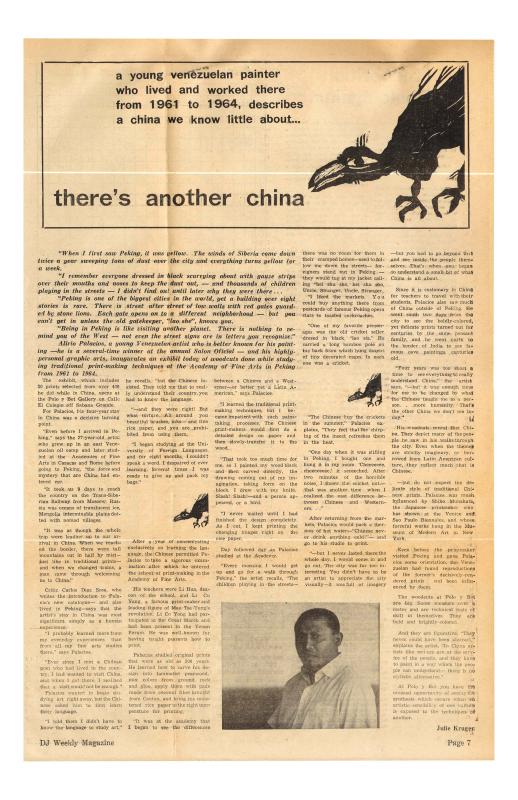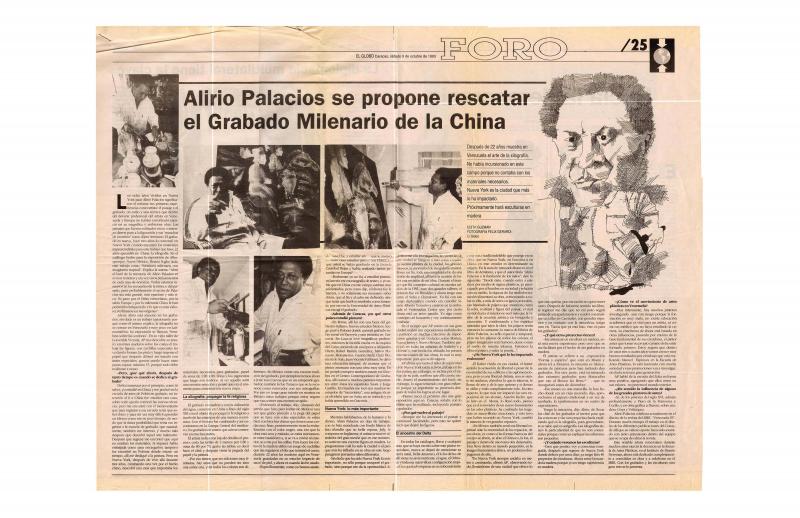This interview with Venezuelan artist Alirio Palacios (b. 1944) by journalist Olga González provides information on the artist’s training in a number of contexts. Though anecdotal at times, the interview provides novel information pertinent, as its title suggests, to the mezzotint or “black manner” technique Palacios studied in Cracow. For the artist, his time in Poland marked the end of an intense period of training in the graphic arts—a statement that, along with the artist’s comment on the importance of black in his work, is among the main contributions made by the document. Palacios states that “there is no beauty greater than blackness in a print,” particularly in a mezzotint. He remarks as well that in his graphic work and painting, he continues his investigation of the color black. The interview also provides new information on the creative process Palacios uses in his prints, which are based on drawings. The drawn image is often modified as it is transferred onto the plate for printing.
For other texts on Alirio Palacios, see Igor Molina, “Alirio Palacios: El arte de la violencia” (ICAA doc. no. 1155701), which discusses the artist’s training in printmaking in Poland and in China; Lenelina Delgado’s article, “Alirio Palacios: El estado tiene la responsabilidad del futuro del Centro de Diseño” (doc. no. 1155596); “Regresa a sus país uno de los grabadores más importantes de América Latina” (doc. no. 1155203), which like this text, is by Olga González; English author Julia Kruger’s, “There's another China”(doc. no. 1155219); Yasmín Monsalve,“Soy un gran aliado de mi país: Alirio Palacios expone xilografías en la Freites” (doc. no. 1155733); and Edith Guzmán’s interview with the artist, “Alirio Palacios se propone rescatar el grabado milenario de China” (doc. no. 1155809).






